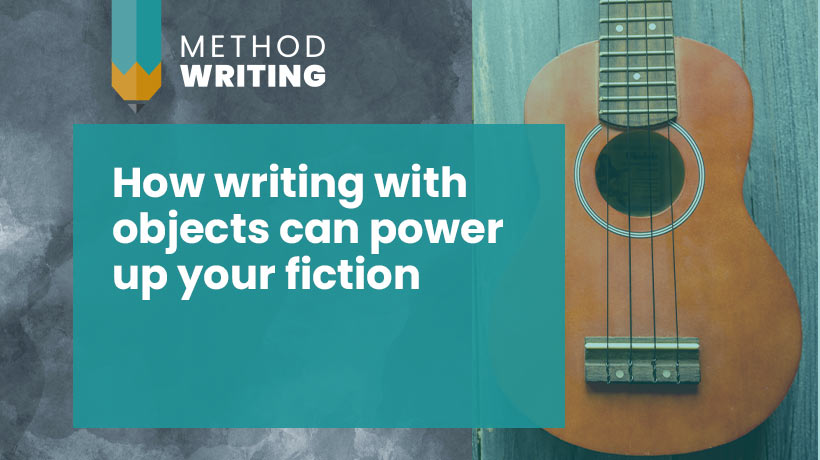Writing tips from improv theatre – offers and deadballs
Improv comedy has some great techniques for writers. Flow and momentum are crucial in improv, just as in writing. Here are some *gold* writing and editing tips taken from improv and drama.
I’m so in awe of improv artists. It’s such a risky, pressurised performance, and you’re horribly exposed if things go wrong.
I know my mind would seize up in the headlamps. I’d be unable to move, much less come out with a clever quip or off-the-wall idea.
But any improv artist would tell me off for having those limiting thoughts in the first place.
According to Jimmy Carrane, The Improv_Nerd, improv is the place where Fear Meets Joy. I just love this idea, and think it applies equally well to writing.
Improv techniques to help writers
Although improv theatre looks spontaneous, there’s a shedload of technique it.
Improv has its own special codes and practices to keep the performance flowing. If you’re a newbie improviser, you need to master conventions and structures, to create a sense of form. So deliberate practice is very much part of improv, too.
Some improv techniques are incredibly helpful for writers, especially if you’re writing dialogue.
Here’s one of the core concepts of improv, and how it can help your dialogue and editing.
Improv writing tip # 1 – ACCEPT OFFERS
Imagine speaking to someone who constantly said “no”! That conversation would very quickly die. When power is skewed to one side, your scene is stuck, without the give and take needed to keep things flowing.
In improv, your default setting is “yes”. When your improv partner makes an “offer”, you accept it, and run with it. This calls for extraordinary trust, openness and generosity. It’s so much easier to say “no!”
I call the “no” kind of dialogue “deadballs”. Sometimes writers think that deadballing is a way of creating conflict and tension in a scene. Sometimes it is. But often, it just destroys momentum.
Improv writing tip # 2 – AVOID DEADBALLS
Deadballs? When one of your characters constantly shuts the other down. It very quickly gets boring!
With deadballs, the power dynamics are too one-sided. Here’s an example:
JAY: How about we build a raft and sail down the river?
MEL: No.
JAY: Take a picnic, a bottle of champagne…
MEL: Don’t fancy it.
JAY: Go skinny-dipping at sunset…
MEL: God, no.
At this point, JAY needs to either walk out or clonk MEL over the head. The dynamic in this improv is one-sided, and the writing has closed down possibilities. JAY’s next line needs to change the pattern and introduce a new “beat”. It could be something like:
JAY: Are you OK?
But that’s still obvious, and maintains the status dynamics. How about:
JAY: I’m sick of you. Have a nice life.
This is better. It breaks the pattern, and readies MEL for action, ie walking out the door. With this line, JAY has provoked change, and if MEL doesn’t react, the scene will be over. The audience is now wondering what MEL will do.
Here’s another possible line:
JAY: With Amanda.
Ooh! JAY has just lobbed a grenade into the conversation! Who’s Amanda? Is MEL playing away? Are the romantic gestures only for the lover, and not the partner?
This line opens things out, and creates questions, conflict and momentum. It’s also unexpected and oblique, creating an imaginative gap for the audience to fill in in the mind’s eye. They have to do some imaginative work, so they’re automatically more engaged.
Here’s another improv writing technique to help writers create flow and engagement:
Accepting offers
In improv, the players accept each other’s offers. They don’t try to improve them or offer alternatives. They go with the flow. Here’s an example:
JAY: How about we build a raft and sail down the river?
MEL: Great! Here’s a tree.
JAY: Fab! Here’s a very small axe.
MEL: Splendid! Those teeth of yours look blunt!
[Mel sharpens Jay’s teeth.]
This is actually very hard to do! In real life, we rarely accept offers. We’re far more used to refusing, stalling, questioning, modifying according to our own agendas.
Note that in this example, the characters aren’t simply agreeing with each other in a conversational way (aka “running on the spot”). They’re moving the action along each time. This creates momentum.
Improve your dialogue
Look at each line of your dialogue, and note any offers and deadballs.
Is one character closing the other down too much?
Is one wielding all the power?
What do you learn about the flow of energy between the characters?
Try changing some of the deadballs into offers. What happens to the flow?


